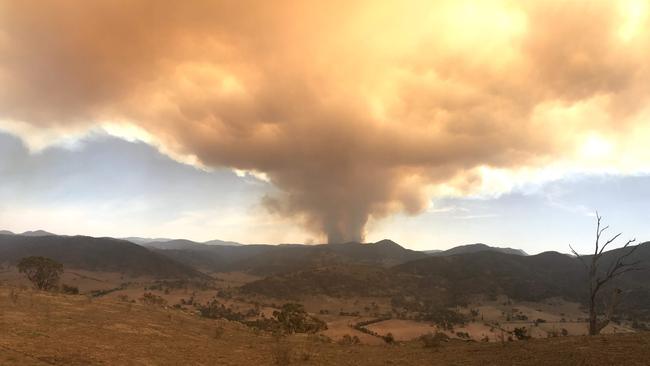‘Black Summer’ bushfires linked damaged ozone hole over Antarctica, study finds
A ‘fire-breathing dragon of clouds’ released during Australia’s 2019 bushfires had a worrying impact on the ozone layer over Antarctica, a new study has found.
National
Don't miss out on the headlines from National. Followed categories will be added to My News.
Australia’s Black Summer bushfires created a “fire-breathing dragon of clouds” that lasted so long it affected the hole in the ozone hole above Antarctica, according to a new study.
The report published in the Nature journal “Scientific Reports” on Friday found the hole above Antarctica, which appears every spring, lasted longer than usual following the fires over the summer of 2019, and reached “record levels” in 2020.
The 5.8 million hectares burned on the east coast of the country burned so intensely it created the smoke infused Pyrocumulonimbus cloud formations, the study found.
Called a “fire-breathing dragon of clouds” by NASA, the bushfires shot more smoke high into the atmosphere than the previous record set by the 2017 North American wildfires.
Researchers from the University of Exeter and the University of Manchester traced a link from the unprecedented smoke released by the Black Summer fires to the ozone hole lingering above Antarctica longer than usual.

Pyrocumulonimbus clouds can affect the local weather, causing fire tornadoes and lightning storms.
Around New Year 2019, the pyrocumulonimbus event stretched on for days and released “millions of tonnes of smoke and associated gases” into the upper troposphere and lower stratosphere, according to researchers.
The build-up of smoke particles, in turn, caused the lower stratosphere to warm to levels not seen since the eruption of Mount Pinatubo in 1991, they found.
Because of this stratospheric warming, the fires also prolonged the Antarctic ozone hole, which appears above Antarctica each spring and “reached record levels in observations in 2020”.
The hole was first created by human pollution -- particularly the chlorofluorocarbons (CFCs) that were once emitted from many refrigerators -- but in recent decades, global co-operation has given the ozone layer a chance to repair.
The Montreal Protocol, signed in 1987 and since ratified by 195 countries, sharply reduced the amount of CFCs in the atmosphere, and the ozone layer was expected to fully recover by 2060, according to United Nations modelling.

However, the researchers warn that because climate change will increase the frequency and intensity of bushfires, similar events -- in which pyrocumulonimbus clouds shoot smoke high into the stratosphere -- will become more likely.
Professor James Haywood that climate change could “absolutely” stymie the gains made by the Montreal Protocol.
“Our climate models suggest an increase in frequency and intensity of wildfires in the future under global warming. This may lead to more events like that in 2020, which could in turn lead to more ozone depletion,” he said.
“So the considerable efforts that we’ve put in protecting the ozone hole could be thwarted by global warming.”
- With AFP
More Coverage
Originally published as ‘Black Summer’ bushfires linked damaged ozone hole over Antarctica, study finds





